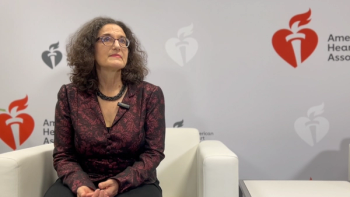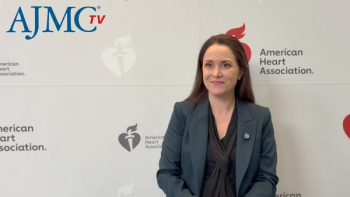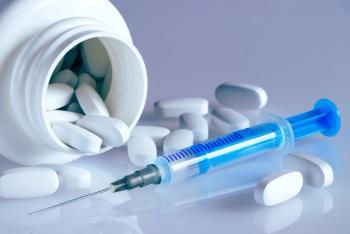
Adults Hospitalized With Acute Heart Failure Treated With Empagliflozin Are 36% More Likely to See Clinical Benefit
Despite ample trial evidence that empagliflozin is effective across a broad spectrum of chronic heart failure, some doctors had been reluctant to prescribe in an acute hospital setting for safety reasons. EMPULSE findings presented at the 2021 AHA Scientific Sessions address this concern.
Empagliflozin, already shown to offer benefits for adults with chronic heart failure, also improves outcomes for adults who are hospitalized with acute heart failure, according to findings presented Sunday during the 2021 American Heart Association Scientific Sessions.
Results from the EMPULSE study1 showed that adults treated with the sodium-glucose cotransporter 2 (SGLT2) inhibitor while in the hospital were 36% more likely to see clinical benefits compared with those taking placebo. Patients with acute heart failure who took empagliflozin had reduced rates of death or rehospitalization, and they reported better quality of life than those in the control group.
First developed to treat type 2 diabetes (T2D), empagliflozin was the first drug in the SGLT2 inhibitor class
Lead study author Adriaan Voors, MD, PhD, MD, PhD, professor at the University Medical Centre Groningen in The Netherlands, explained that despite having results from multiple trials showing the benefits of SGLT2 inhibitors broadly—and empagliflozin, specifically—in chronic heart failure, some doctors were still reluctant to prescribe these drugs in an acute setting. EMPULSE was designed to address those concerns. The trial’s primary end point for clinical benefit was a composite of death, number of heart failure events, time to first heart failure event (HFE), and the change in baseline for standard quality-of-life measure at 90 days.
Boehringer Ingelheim and Eli Lilly & Company, which funded the study, market empagliflozin as Jardiance.
Chronic vs Acute Heart Failure
Voors distinguished between chronic heart failure and acute heart failure during a press briefing ahead of the presentation. Heart failure, which occurs when the heart cannot adequately pump blood throughout the body, can lead to fluid accumulation and congestion in the lungs and peripheral tissues.
Most patients with chronic heart failure are treated in an outpatient setting, Voors said. “When signs and symptoms progress due to excessive fluid accumulation, this might lead to life threatening conditions where patients need to be hospitalized for acute heart failure,” he said.
Once patients are hospitalized for heart failure, they face a poorer prognosis and are particularly at risk in the weeks afterward. In fact, some of the first quality measures developed in the Hospital Readmission Reduction Program under the Affordable Care Act focused on 30- and 90-day readmission rates for heart failure.
“Patients with acute heart failure have an even higher risk of death and heart failure in the hospital admissions, especially in these early months after discharge,” Voors said.
He noted that while there are now up to 10 different approved therapies for chronic heart failure, “very few treatments have proven to benefit patients who are hospitalized for acute heart failure.”
Because the SGLT2 inhibitor class is shown to work very quickly, there have been recent calls for prescribing empagliflozin and other drugs in the class while patients with acute heart failure are still in hospital. Other data released at AHA and
“Approximately 1 in 4 patients hospitalized for worsening HFrEF [heart failure with reduced ejection fraction] die or are readmitted within 30 days of discharge,” the JACC authors wrote this week. “The benefits of SGLT2 [inhibitor] medication on the risks of death and hospitalization in patients with HFrEF accrue within days to weeks after initiation.”2
However, EMPULSE was the first trial to demonstrate both efficacy and safety for an SGLT2 inhibitor in this setting.
“This is the first time we have really seen this type of medication work so effectively and safely in patients who were hospitalized for acute heart failure, regardless of heart failure history or diabetes status,” Voors said in a statement. “These results may lead to earlier and more frequent treatment with empagliflozin, which may improve the lives of more people with heart failure.”
EMPULSE Results
The trial involved 530 adults who were stabilized in the hospital after being admitted with acute heart failure symptoms. The average age of the participants was 68, and 66% were men. Patients were randomized 1:1 to receive either a 90-day supply of 10 mg of empagliflozin or 90 days’ worth of placebo pills. Besides tracking patients’ clinical outcomes, including number of deaths and heart failure related events, investigators measured patients’ quality of life on the Kansas City Cardiomyopathy Questionnaire (KCCQ), a 23-item self-administered survey used to measure the patient’s perception of their health status, based on a scale of 0 to 100. The KCCQ Total Symptom Score (TSS) was used.
Findings showed:
- Patients treated with empagliflozin were 36% more likely to see a clinical benefit, such as reduced all-cause mortality, fewer heart failure events requiring hospitalization or urgent care, and alleviation of symptoms compared with those taking placebo. This was expressed as a stratified “win ratio” 1.36 for empagliflozin (95% CI: 1.09 to 1.68; P = .0054).
- Those in the empagliflozin group had less all-cause mortality, 4.2% compared with 8.3% for placebo.
- Those taking empagliflozin were less likely to have a heart failure event (10.6% for the empagliflozin group compared with 14.7% for the placebo group) and fewer serious heart failure events, (32.3% vs 43.6%, respectively).
- Time to all-cause death or first HFE favored empagliflozin (hazard ratio [HR] 0.65, 95% CI: 0.43 to 0.99; P = .0423). The time to cardiovascular death or first HFE also favored empagliflozin, but results did not reach significance (HR 0.69, 95% CI: 0.45 to 1.08; P = .1021).
- The KCCQ-TSS results showed a mean difference of 4.5 at 90 days favoring empagliflozin (95% CI: 0.3-8.6; P = .0347). Patients taking empagliflozin also lost more weight, a mean difference of 1.5 kg (95% CI: –2.8 to –0.3; P = .0137).
- Benefits were seen across subgroups, regardless of whether patients had heart failure with reduced or preserved ejection fraction, or whether they had T2D.
During the press briefing, Voors emphasized how quickly empagliflozin offered benefits in the acute setting. Patients were started on the drug an average of 3 days after being admitted. “Within a 90-day period of time, there was already a beneficial effect on the primary endpoint,” he said. “This supports, of course, starting the drug in hospital, not only because it's beneficial, but also because it's safe.”
Voors said the trial did not show evidence of increased hypotension or diabetic ketoacidosis; a slight drop in renal function at initiation quickly disappears.
“I think it gives reassurance to physicians, at least to myself, that it's that it's not only safe to start early in hospital, but it's also beneficial to start early in hospital,” he said.
Results from EMPULSE have been accepted for publication in Nature Medicine.
References
1. Voors AA, Angermann CE, Teerlink JR, et al., for the EMPULSE Trial Investigators. Empagliflozin in patients hospitalized for acute heart failure: the EMPULSE trial. Presented at the 2021 American Heart Association Scientific Sessions, Virtual; November 14, 2021. Late-breaking session 5.
2. Rao VN, Murray E, Butler J, et al. In-hospital initiation of sodium-glucose cotransporter 2 inhibitor for heart failure with reduced ejection fraction. J Am Coll Cardiol. 2021;78(20):2004–2012. doi:10.1016/j.jacc.2021.08.064
Newsletter
Stay ahead of policy, cost, and value—subscribe to AJMC for expert insights at the intersection of clinical care and health economics.















































